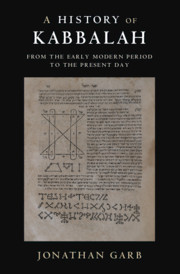Book contents
- A History of Kabbalah
- A History of Kabbalah
- Copyright page
- Dedication
- Contents
- Figures
- Acknowledgments
- Introduction
- 1 Premodern and Modern Kabbalah
- 2 The Safedian Revolution of the Sixteenth Century
- 3 The Kabbalistic Crisis of the Seventeenth Century
- 4 Canonization
- 5 Beginnings of Globalization
- 6 Destruction and Triumph
- 7 Recurrent Themes
- Appendix Timeline
- Glossary
- Bibliography
- Index
5 - Beginnings of Globalization
The Nineteenth Century
Published online by Cambridge University Press: 02 July 2020
- A History of Kabbalah
- A History of Kabbalah
- Copyright page
- Dedication
- Contents
- Figures
- Acknowledgments
- Introduction
- 1 Premodern and Modern Kabbalah
- 2 The Safedian Revolution of the Sixteenth Century
- 3 The Kabbalistic Crisis of the Seventeenth Century
- 4 Canonization
- 5 Beginnings of Globalization
- 6 Destruction and Triumph
- 7 Recurrent Themes
- Appendix Timeline
- Glossary
- Bibliography
- Index
Summary
Commencing with the Hasidic world, the chapter places it in geopolitical context, focusing on the rise of the Habad movement and the intergenerational change around the Napoleonic Wars. Besides striking personalities and radical teachings, aspects of lifestyleare considered. Naturally, the chapter turns to transformations within the opponents of Hasidism. The interplay of moderation of theological positions and the persistence of asceticism is addressed, yet the leading drama is the emergence of the Musar movement, which displaced overt kabbalistic concerns. The narrative then shifts to Ottoman Palestine, describing the immigration of both the Hasidim and their opponents, to this emergent center, later revisited through the history of the local Sephardic kabbalists.Moving beyond the Jewish world, the academic and literary reception of Kabbalah in Western and Central Europe is examined, alongside the reception of Idealist philosophy amongst kabbalistic writers. In conclusion, messianism is posited as the common denominator of the highly divergent streams of the century's kabbalistic creativity. In this context, the beginnings of American Kabbalah are addressed.
- Type
- Chapter
- Information
- A History of KabbalahFrom the Early Modern Period to the Present Day, pp. 141 - 187Publisher: Cambridge University PressPrint publication year: 2020

